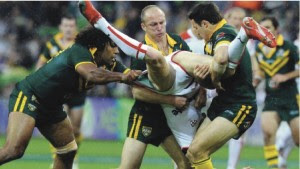Lowitja O'Donoghue
One of the most admired and influential leaders in Australian history.
Lowitja has lots of charm, warmth and a great sense of humour. Those qualities are balanced by her mental strength and determination, which today, makes her one of our greatest ever Australian leaders.
Lowitja was born in 1932 in a remote Aboriginal community. In August 1932, Lowitja was a infant newly born into the Yankunjatjara tribe in the remote North-West Reserve of South Australia. Her mother was a full blood of the tribe, and her father the owner of a pastoral station which later passed into the hands of the McLachlan family. This was not a casual relationship and Lois is the youngest of five children born to the same parents.
In 1934, members of the frankly paternalistic United Aborigines' Mission visited her Yankunjatjara tribe at Indulkana, 200 miles north of Coober Pedy. They persuaded her mother it would be best for the child to be brought up at the Mission's Home for Children at Quorn. Without in any way approving such a policy, Lowitja acknowledges that she had a happy childhood there, and later at the Colebrook home at Eden Hills.
During that time, her mother did not know where her family had been taken, Lowitja was not to see her mom for 33 years.
Lowitja's first job was as a nanny looking after six kids with a family in Victor Harbor some 100 km south of Adelaide.
After a long struggle to win admission to a training hospital, Lowitja became the first black nurse in South Australia.
From 1950 to 1953 O'Donoghue worked as a nursing aide in Victor Harbor.
In 1954 Lowitja was in the first intake of unqualified students to attend the Royal Adelaide Hospital which offered good nursing career prospects. She qualified as a nurse and worked at the Royal Adelaide Hospital until 1961, being appointed a charge nurse just before leaving
She spent time with the Baptist Church working in Assam, northern India as a nurse relieving missionaries who were taking leave back in Australia.
After returning in 1962, she worked as an Aboriginal Liaison Officer with the South Australian Department of Education. She later transferred to the SA Department of Aboriginal Affairs and was employed as a Welfare Officer based mainly in the north of the state, in particular at Coober Pedy, some 200 kilometres south of her birthplace.
In 1967 Lowitja joined the Commonwealth Public Service as a junior admin officer in the Adelaide office of the newly formed Department of Aboriginal Affairs. After eight years she became the Director of the Department's office in South Australia, a senior officer position, responsible for the local implementation of national Aboriginal welfare policy.
In 1990 Lowitja was appointed Chairperson of the Aboriginal and Torres Strait Islander Commission a position she held until 1996.
.
In 1976, Lowitja was the first Aboriginal woman to be inducted into the new Order of Australia founded by the Labor Australian Commonwealth Government. The award was in recognition of her work in the welfare field
Lowitja was made a Commander of the Order of the British Empire in 1983, and was named Australian of the Year in 1984, for her work to improve the welfare of Australian Aboriginal and Torres Strait Islander people. She was made a Companion of the Order of Australia (AC) in 1999.
Lowitja has received honorary doctorates from Murdoch University, the University of South Australia, the Australian National University, the Queensland University of Technology and Flinders University. In 2000 she was made an honorary professorial fellow at Flinders University and was a visiting fellow at Flinders University.
She is a National Patron at the The Bob Hawke Prime Ministerial Centre.
Lowitja was inducted into the Olympic Order in 2000.
In 2005 Lowitja was made Dame of the Order of St Gregory the Great by Pope John Paul II.
Dame of the Order of St Gregory the Great
•1977 Member Order of Australia
•1982 Advance Australia Award
•1983 Commander of the Order of the British Empire
•1984 Australian of the Year
•1992 SA Great Award
•1993 Honorary Doctorate: Murdoch University, WA
•1993 Honorary Doctorate: University of South Australia, SA
•1995 Honorary Doctorate: Australian National University, ACT
•1995 Honorary Fellowship: Royal College of Nursing, Australia
•1996 Honorary Doctorate: Queensland University of Technology, Queensland
•1996 Honorary Doctorate: Flinders University of South Australia
•1998 Honorary Fellowship: Royal Australasian College of Physicians
•1998 Australian Living National Treasure
•1999 Companion of the Order of Australia
•2000 Honorary Professional Fellow: Flinders University of South Australia
•2000 Olympic Order
And most of all a real true blue Aussie we can all be proud of !




















































